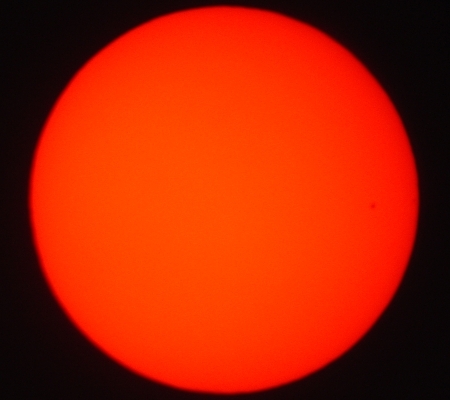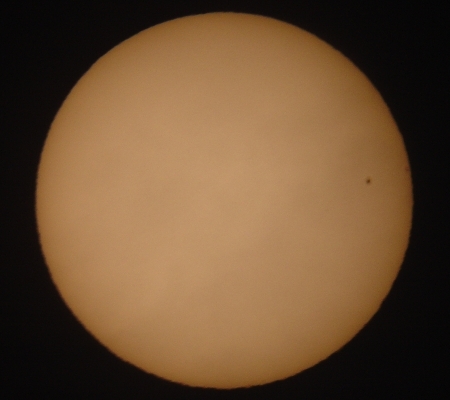Sunspots 933 and 930 (on far eastern side) are about to disappear for the next two weeks, so today seems like the last day for taking pictures. A few years ago I purchased an IR-Pass filter in error. Rather than returning it, I decided to keep it for a “rainy-less” day. So, I set up my Orion this time powered by my Sphinx mount to eliminate tracking problems mentioned in the first blog (here) of 2007. I was curious to see what effect the filter would have.

I removed the IR-Pass filter and threaded my IR-Block filter onto the diagonal. This filter is supposed to be used with digital cameras. However, I didn’t see any noticeable difference between the image of the sun I took today with the ones I took previously. Maybe I’ll see the difference with and without the IR-Block filter next time I image the moon.

Sunspot 933 is visible in both, but not as easily discernible on the IR-Block. If you look closely you can see Sunspot 930 on the far eastern edge of both images near the “equator”, ENE with respect to Sunspot 933. The latitudes of the spots in the two images differ because of camera-diagonal alignment.
